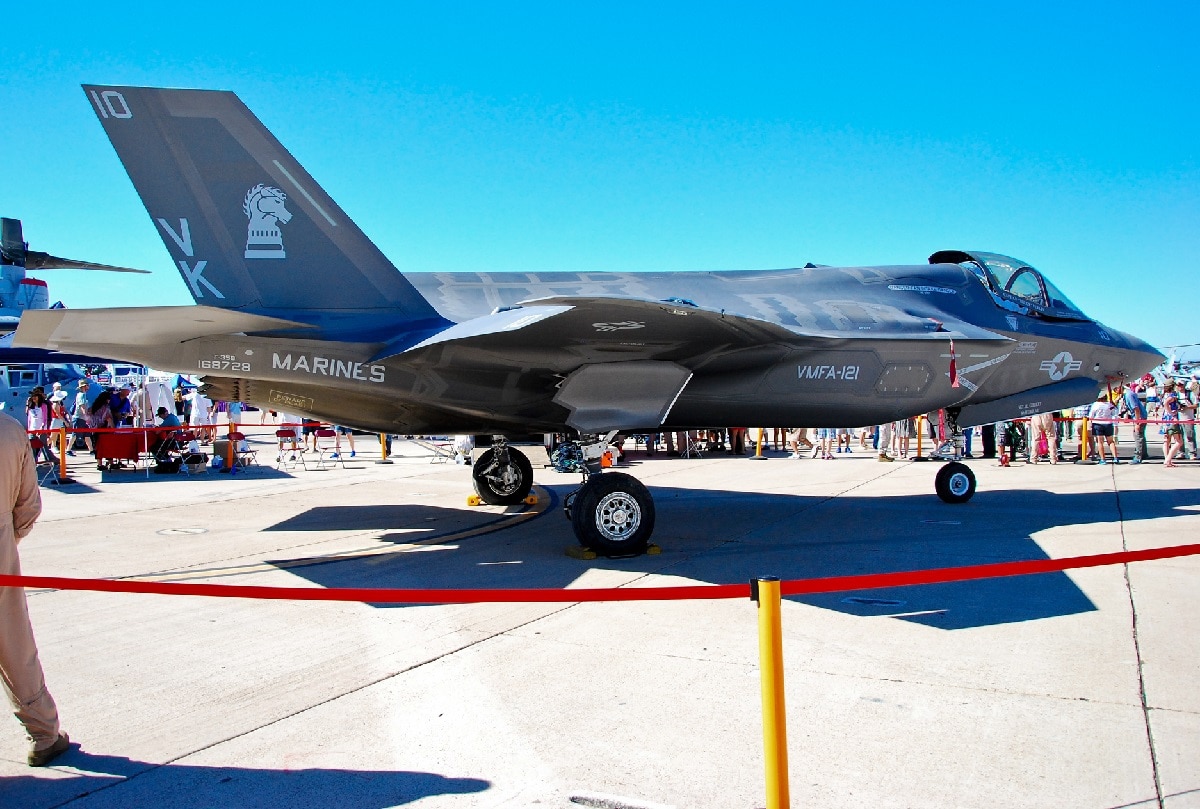Some United States Marine Corps (USMC) aviators have been logging tons of frequent flyer miles in advance of their combined deployment with the United Kingdom’s Royal Navy flagship. The pilots flew their F-35B Lightning II aircraft more than 5,000 miles from their home station in Arizona to Royal Air Force Lakenheath, England.
The F-35B aircraft with Marine Fighter Attack Squadron (VMFA) 211, famously known as the “Wake Island Avengers,” based out of Marine Corps Air Station Yuma, Ariz., arrived at RAF Lakenheath last month to conduct final training for a carrier deployment aboard HMS Queen Elizabeth as part of Carrier Strike Group (CSG) 21.
History in the Making
CSG-21 is preparing for its first overseas deployment, which is scheduled to last seven months and will take the carrier to the Far East. During the world-wide deployment, VMFA-211 will integrate with the UK’s 617 Squadron “The Dambusters.” Together the units will form the largest fifth-generation carrier air wing in the world, consisting of ten USMC F-35Bs and eight more from the RAF’s 617 Squadron.
“We have never seen a ship with 18 F-35s out there that is going to transverse half the world like we’re going to do,” Lt. Col. Andrew D’Ambrogi, the commanding officer of VMFA-211, told USNI News in a recent interview. “It’s a pretty bold statement. It’s about power projection.”
This will be the first time the USMC has been able to deploy a full ten-aircraft squadron with all of its personnel since Marine Corps Commandant Gen. David Berger cut the number of jets in its F-35 squadrons from sixteen aircraft to ten. The cut was made to allow the Marine aviators to conduct more experimentation to better determine how to best utilize the F-35Bs and Cs. There had been past concerns about whether the Corps had sufficient maintenance personnel to sustain the F-35.
Even getting the ten aircraft to the UK in advance of the deployment required considerable effort.
D’Ambrogi had previously explained that “Moving the Marines, aircraft and equipment to the United Kingdom required coordinated planning, complex logistical effort, diligent maintenance and seamless execution. Now that we have arrived in the United Kingdom, we are reintegrating with our UK counterparts and focused on providing both the commodore of CSG-21 and US combatant commanders with ready, combat-capable, 5th-generation aircraft.”
The combined deployment marks another step forward in the special relationship between the two nations.
“We have no closer ally than the United Kingdom,” said U.S. Embassy Chargé d’Affaires Yael Lempert. “Together, we stand committed to protecting our shared security, addressing security challenges in the Indo-Pacific and beyond, and reaffirming our steadfast commitment to the NATO alliance.”
In preparation for this deployment, VMFA-211 previously completed a deployment for training last fall at Royal Air Force Base Marham and aboard HMS Queen Elizabeth.
The Wake Island Avengers are also being supported with U.S. Navy personnel assigned to USS John C. Stennis for the duration of the deployment.
With ten F-35B Lightning II jets and 180 U.S. Marines forming the squadron, this deployment could better help the Marine Corps determine not only whether it has the right number of aircraft to conduct operations, but also if it has the correct number and the right kind of personnel for the overall maintenance procedures.
“We want to make sure that we’ve got the right type of Marines trained to the right type of jobs,” D’Ambrogi told USNI News. “And then make sure that we have the right qualifications to sustain all ten aircraft and meet the mission cycle flows for what we’re executing. A shipboard environment’s great to do it because you’re isolated. What you’ve got is kind of what you’ve got, and anything you need from the exterior is going to take some time.”
Peter Suciu is a Michigan-based writer who has contributed to more than four dozen magazines, newspapers and websites. He regularly writes about military small arms, and is the author of several books on military headgear including A Gallery of Military Headdress, which is available on Amazon.com.

